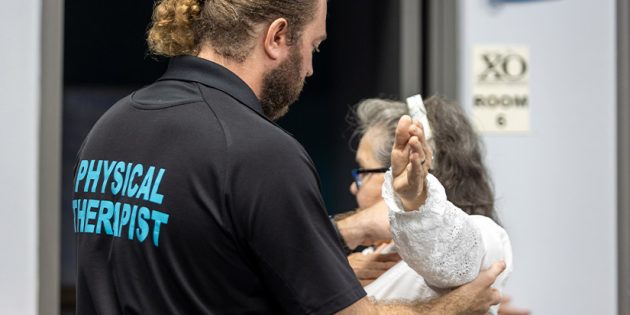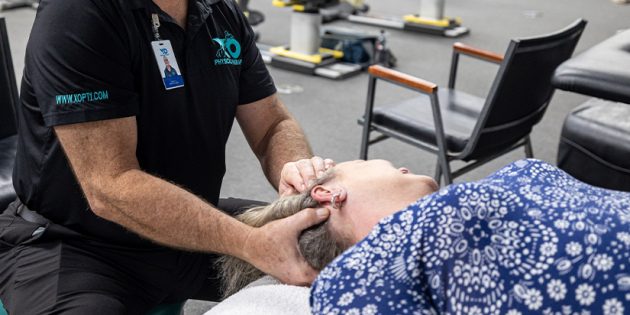Frequent Questions About Neck Pain Physical Therapy

Neck pain can interfere with your normal life. Thankfully, maintaining the right posture and performing the right exercises under the supervision of a physical therapist can help you fetch relief from the condition to a large extent. In this article, we will look at a few commonly asked neck pain physical therapy FAQs.
Neck pain physical therapy FAQs
1. Does physical therapy help with neck pain?
Yes, physical therapy can treat different types of diseases and conditions, including neck pain. But the therapist must conduct a proper diagnosis and observation to determine the cause of the neck pain and the appropriate therapy to treat it. Depending on whether the neck pain is due to muscular strain, injury, wearing of joints, inflammation, nerve problems, or other reasons, the physical therapist will suggest the proper therapy and exercise to help ease the pain.
2. What therapy is best for neck pain?
As stated above, the suitable therapy for neck pain can vary based on the actual cause of the pain. So, there isn’t a single exercise or a fixed group of exercises that can treat all types of neck pain.
For example, if it’s a simple case of light stiffness around the neck, it can be treated with simple exercises such as head or shoulder rolls. Cough and mucus can also lead to neck pain in some people, in which case, postural drainage can provide relief. But for more complicated cases such as degenerative cervical disc disease, there are more specific forms of therapy, such as cervical traction.
Only a certified physical therapist can determine the best therapy for your neck pain after carefully diagnosing your condition.
3. What does physical therapy of the neck consist of?
Physical therapy of the neck consists of various exercises that target different areas around the neck. Head and shoulder rolls reduce stiffness and work as a warm-up before other exercises. There are plenty of exercises which include stretching and tilting. Chin tucks are also one of the common physical therapy exercises for the neck. Some forms of physical therapy may also need additional equipment like a light dumbbell or a special setting, such as aquatic therapy, which is conducted inside a pool.
4. How do you assess neck pain?
Diagnosis and assessment of your neck pain are better done by a professional physical therapist. They’ll examine different areas around your neck, try to find the exact regions which are hurting, and check the level of mobility, which means how well you can move your neck around without experiencing discomfort and what types of movements cause the pain to increase in intensity.
However, your assessment can also help the therapist better understand your condition. To assess your neck pain, focus on where exactly you’re feeling it and how you would describe it, like whether its stiffness in a certain region or a sharp stinging sensation at a fixed position. Your observation, experience, and the therapist’s diagnosis will provide the best assessment for your neck pain.
5. Can physical therapy help pinched nerve in the neck?
Yes, various stretching exercises can restore pinched nerves in the neck. In some cases, the therapist may massage the affected area to loosen the tissues and release the trapped nerve. Posture-improving exercises are also important to ensure that the pinched nerve doesn’t worsen due to bad positioning. After the therapist determines the location of the pinched nerve, they will decide which combination of exercises will work best to restore the nerves.
6. What kind of physical therapy is good for neck arthritis?
Neck arthritis is a chronic condition that can be treated with physical therapy in some cases. If the condition is mild and hasn’t reached a severe stage, physical therapy exercises can help to ease the symptoms and improve the strength of the muscles and joints. These exercises include simple movements such as tilting the neck forward and backward, side-to-side, rotations, and retractions. However, such exercises are to be performed only under the recommendation and supervision of professional physical therapists.
7. How do you strengthen your neck muscles?
Physical therapy for the neck is not always about treating pain and symptoms. Some exercises also help to strengthen the muscles around your neck to prevent neck pains from recurring in the future, such as trapezius stretches and cervical retractions. The movements and exercises stretch and then release the neck muscles in a rhythmic pattern, which makes those muscles stronger, more flexible, and resistant to wear and tear.
8. Can physical therapy fix a straight neck?

A straight neck leads to stiffness, lack of mobility, pain, and discomfort. But the condition can be improved with physical therapy. Of course, exercises that include a lot of stretching and movement will be quite difficult for people with a straight neck. But a slow approach can make things easier, where the patient starts with exercises involving little movement and stretching, then gradually increases the level of mobility based on their comfort level. So yes, physical therapy can fix a straight neck, but it takes time and consistency. Some doctors may even recommend physical therapy with other treatments, such as medications or neck braces.
Effective Neck Pain Therapy in RGV
Neck pain can cause discomfort and interfere with your daily lifestyle. But with proper examination and exercises, physical therapy can help you ease the pain naturally. If you’re suffering from neck pain and seeking a reliable physical therapy clinic in RGV, then reach out to us at XO Physical Therapy. We have successfully helped people alleviate neck pain and other conditions, all thanks to our team of certified, highly qualified, and, most importantly, friendly and hospitable staff and physical therapists. Contact us to schedule an appointment or consultation at any of our locations in McAllen, Mission, or Weslaco, Tx.




